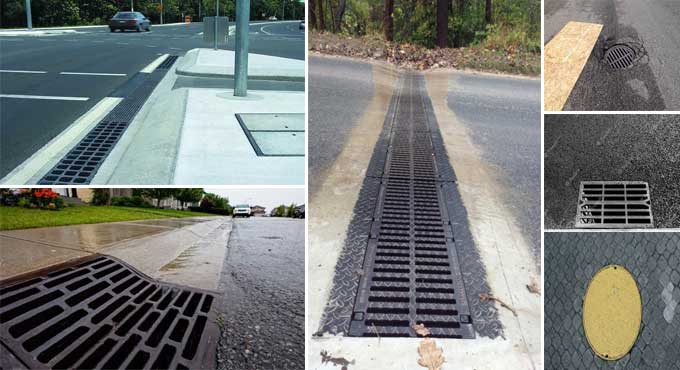
Why is drainage important for Asphalt Pavements?
Pavement failure may occur as a result of moisture accumulation in any structural layer from improper drainage. In the presence of moisture, the pore pressure of the subgrade and aggregate base layer increases, and its shear strength decreases. The underlying soil expands when moist, causing differential heaving when the roadway moves as a result. Humidity can strip because it sticks more to aggregate particles than asphalt binder.
How Water effects the Pavement?
Pavements containing water will slowly deteriorate over time, causing potholes to appear. The asphalt binder is damaged as a result of water breaking its bonds with rock and sand.
In the gasoline production process, crude oil is converted to asphalt binder. Water and oil do not mix.
Another problem is the water under the asphalt pavement. The lack of proper drainage under the pavement can cause the aggregates and subgrade to become saturated, which allows excess traffic to damage the asphalt pavement.
Effects of Improper Drainage
Cracks, Waves & Potholes Formation
Potholes, cracks, waves, and hairlines cause by pools of water on pavements. In case of neglect, water and debris will be more likely to enter the pavement and the layers beneath it.
Subgrade Layer Collapse
Asphalt pavements that have inadequate drainage can accumulate water on top of their surface layers. This water penetrates the pavement over time by getting into its tiny cracks.
Bitumen Stripping
Water can remove bitumen from the pavement that has to expose for a long time.
The bitumen pavement is first stripped off its coating before the sealant removes. Sealing the structure keeps debris, water, and chemicals from passing vehicles out.
Proper Drainage uses
The pavement needs proper drainage in order to prevent pools of water. Potholes become quickly formed when there is little to no drainage slope in the pavement. A 1% slope needs for proper drainage. Maintaining existing pavements regularly prevents water damage. By reducing the damage to your pavement caused by water, crack sealing, patching, and seal coating all extend its lifespan.
Subsurface Drainage
Water can be moved by proper subsurface drainage. When you install a quality aggregate base with class 5 aggregate, your base layer will be strong, stable, and drain water away from the pavement quickly, but this isn't always sufficient. It may be difficult for water to drain from a subgrade made primarily of clay.
The root zone of the supporting material should cover with a 12"-18" layer of sand which can drain into it to improve trainability.
Its goal is to remove all storm water flowing under, on, and near the pavement. Pavement structures can become weak if this water does not remove consistently.
Alternative Method
Installing drain tiles below the pavement can improve subsurface drainage. In drainage tiles, the fabric is used as a filter, round gravel is highly drainable, and a perforated pipe is connected to a catch basin or storm water pipe.
Wrapping it Up
The longevity and stability of asphalt pavement depend on the drainage system and its regular maintenance. In contrast, poor maintenance of the pavement drainage system causes pavement to deteriorate, costing hundreds of thousands of dollars to fix or replace.
The main sources of moisture are rainwater, runoff, and groundwater in high areas. Surface drainage and subsurface drainage prevent these sources from entering the pavement structure or accumulating in the subgrade.
When moisture entry and accumulation prevents surface drainage, it is generally less costly and less risky to remove moisture using subsurface drainage.
Video Source: Gray & Son/Maryland Paving Inc.


